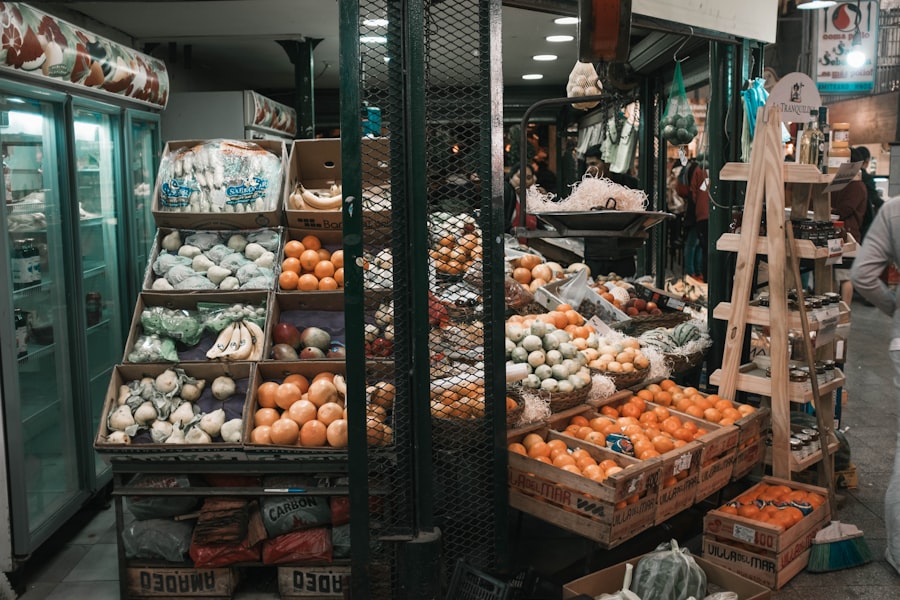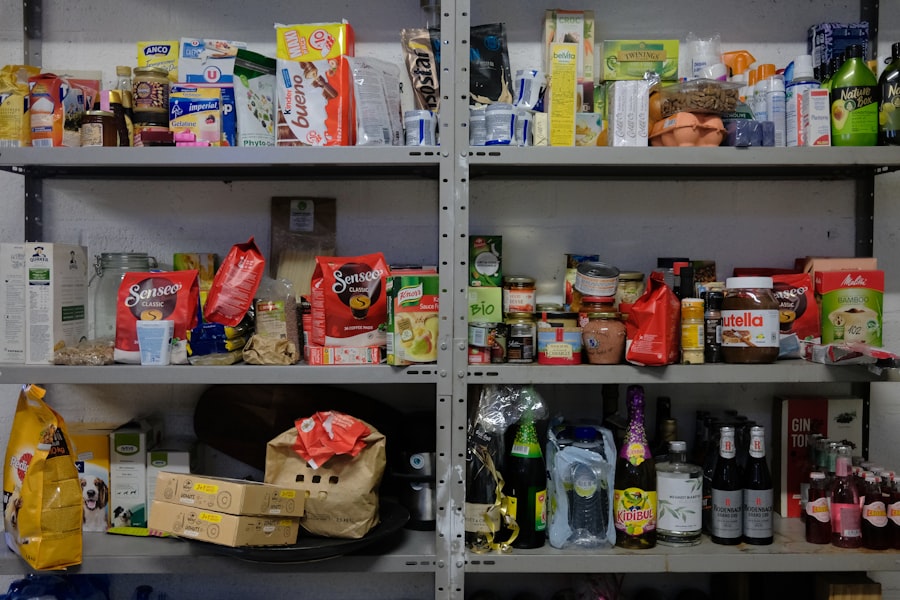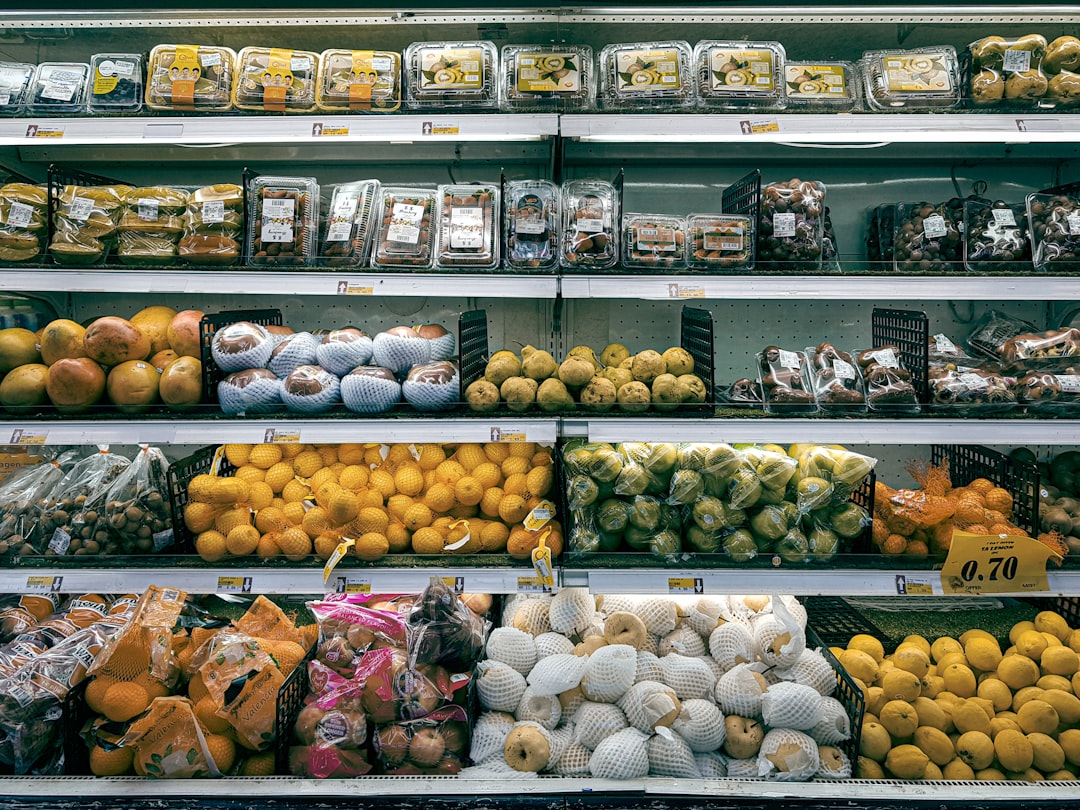The history of food distribution is a complex tapestry woven through centuries of human civilization. In ancient times, food distribution was primarily localized, with communities relying on subsistence farming and barter systems to meet their needs. As societies evolved, so did their methods of food distribution.
The advent of trade routes, such as the Silk Road, facilitated the exchange of goods, including food items, across vast distances. This early form of globalization allowed for the introduction of new ingredients and culinary practices, enriching diets and fostering cultural exchanges. With the rise of empires and urban centers, food distribution became more organized.
The Roman Empire, for instance, established a sophisticated network of roads and ports that enabled the efficient movement of food supplies across its territories. This not only ensured that urban populations were fed but also laid the groundwork for future food distribution systems. The Middle Ages saw the emergence of markets and fairs, where local farmers could sell their produce directly to consumers.
This period marked a significant shift towards a more structured approach to food distribution, setting the stage for the modern systems that would develop in subsequent centuries.
Key Takeaways
- Food distribution has evolved from local barter systems to complex global networks influenced by technology and globalization.
- Developing countries face significant challenges in food distribution, including infrastructure deficits and economic barriers.
- Environmental concerns are rising due to the carbon footprint and waste generated by modern food distribution systems.
- Governments play a crucial role in regulating food distribution to ensure safety, equity, and sustainability.
- Ethical, cultural, and humanitarian factors are increasingly important in shaping fair and responsible food distribution practices.
The Impact of Globalization on Food Distribution:
Globalization has profoundly transformed food distribution, creating a complex web of interconnections that span the globe. The reduction of trade barriers and advancements in transportation have enabled countries to import and export food products with unprecedented ease. This interconnectedness has led to a diversification of diets worldwide, as consumers gain access to ingredients and cuisines from different cultures.
However, globalization has also introduced challenges to local food systems. As multinational corporations dominate the food supply chain, small-scale farmers often struggle to compete.
The consolidation of power in the hands of a few large entities can lead to homogenization of food products, diminishing the variety and uniqueness of local cuisines. Additionally, the environmental impact of transporting food over long distances raises concerns about sustainability and carbon footprints. Thus, while globalization has expanded access to diverse foods, it has also prompted critical discussions about the implications for local economies and ecosystems.
The Role of Technology in Food Distribution:

Technology plays a pivotal role in modern food distribution, revolutionizing how food is produced, stored, and delivered. Innovations such as refrigeration and cold chain logistics have significantly extended the shelf life of perishable goods, allowing them to be transported over long distances without spoilage. This advancement has made it possible for consumers to enjoy fresh produce year-round, regardless of seasonal limitations.
Furthermore, technology has streamlined supply chain management, enabling companies to track inventory levels and optimize delivery routes efficiently. The rise of e-commerce has also transformed food distribution by providing consumers with convenient access to a wide array of products from the comfort of their homes. Online grocery shopping platforms have gained popularity, particularly during the COVID-19 pandemic, as people sought safer alternatives to traditional shopping methods.
This shift has prompted traditional retailers to adapt their business models and invest in digital infrastructure to remain competitive. As technology continues to evolve, it is likely that food distribution will become even more efficient and responsive to consumer demands.
The Challenges of Food Distribution in Developing Countries:
| Challenge | Description | Impact on Food Distribution | Example Metrics |
|---|---|---|---|
| Infrastructure Deficiencies | Poor road networks, lack of storage facilities, and inadequate transportation systems. | Delays in delivery, increased food spoilage, and higher transportation costs. | Percentage of paved roads: 30-50%; Storage capacity loss: up to 40% |
| Supply Chain Inefficiencies | Fragmented markets, lack of cold chain systems, and limited access to technology. | Food quality degradation and limited market access for farmers. | Post-harvest losses: 20-30%; Cold chain coverage: less than 10% |
| Economic Constraints | Limited financial resources for farmers and distributors, high cost of inputs. | Reduced production and distribution capacity. | Access to credit: less than 25% of farmers; Input cost increase: 15-20% |
| Political and Regulatory Issues | Unstable policies, trade restrictions, and corruption. | Disrupted supply chains and increased operational risks. | Frequency of policy changes: 3-5 per year; Corruption perception index: low |
| Climate and Environmental Factors | Unpredictable weather, droughts, and floods affecting production and transport. | Reduced crop yields and damaged infrastructure. | Crop yield variability: ±20%; Infrastructure damage incidents: 2-4 per year |
| Social and Cultural Barriers | Gender inequality, lack of education, and traditional practices. | Limited participation in food distribution and innovation adoption. | Female farmer participation: 30-40%; Literacy rate in rural areas: 50-60% |
In developing countries, food distribution faces a myriad of challenges that hinder access to nutritious food for many populations. Poor infrastructure is often a significant barrier; inadequate roads and transportation systems can make it difficult for farmers to reach markets or for consumers to access fresh produce. Additionally, limited access to refrigeration and storage facilities can lead to high levels of food waste, exacerbating food insecurity in regions where resources are already scarce.
Economic factors also play a crucial role in shaping food distribution in developing countries. Many smallholder farmers lack the financial resources needed to invest in modern farming techniques or transportation options. As a result, they may rely on traditional methods that yield lower productivity and limit their ability to compete in larger markets.
Furthermore, political instability and conflict can disrupt supply chains and hinder efforts to improve food distribution systems. Addressing these challenges requires a multifaceted approach that includes investment in infrastructure, support for local farmers, and policies aimed at enhancing food security.
The Environmental Impact of Food Distribution:
The environmental impact of food distribution is an increasingly pressing concern as awareness grows about climate change and sustainability. The transportation of food over long distances contributes significantly to greenhouse gas emissions, particularly when fossil fuels are used for shipping and trucking. Additionally, the production processes associated with large-scale agriculture often involve practices that deplete natural resources and harm ecosystems.
Deforestation for agricultural expansion, excessive water usage, and reliance on chemical fertilizers are just a few examples of how food distribution can negatively affect the environment. Efforts are being made to mitigate these impacts through sustainable practices in food distribution. Local sourcing initiatives aim to reduce transportation distances by encouraging consumers to buy from nearby farms or markets.
This not only supports local economies but also minimizes carbon footprints associated with long-distance transport. Moreover, innovations in packaging and logistics are being explored to reduce waste and improve efficiency throughout the supply chain. As consumers become more environmentally conscious, there is a growing demand for transparency in food sourcing and distribution practices.
The Economics of Food Distribution:

The economics of food distribution is a complex interplay between supply and demand, pricing strategies, and market dynamics. Food distribution networks are influenced by various factors, including consumer preferences, seasonal availability, and global market trends. The pricing of food products is often determined by production costs, transportation expenses, and competition among distributors.
In many cases, fluctuations in commodity prices can have ripple effects throughout the entire supply chain, impacting both producers and consumers. Moreover, the economics of food distribution is closely tied to issues of equity and access. In many regions, disparities in income levels can lead to unequal access to nutritious foods.
Low-income communities may find themselves in “food deserts,” where fresh produce is scarce or prohibitively expensive. Addressing these economic disparities requires targeted interventions that promote fair pricing practices and support local food systems. By fostering equitable access to healthy foods, societies can work towards improving public health outcomes while also bolstering local economies.
The Role of Government in Regulating Food Distribution:
Governments play a crucial role in regulating food distribution through policies that ensure safety, fairness, and accessibility within the food supply chain. Regulatory frameworks are established to oversee various aspects of food distribution, including quality control standards, labeling requirements, and health regulations. These measures are designed to protect consumers from unsafe or misleading products while promoting transparency within the industry.
In addition to regulatory oversight, governments can implement programs aimed at enhancing food security and supporting local agriculture. Initiatives such as subsidies for small farmers or investments in rural infrastructure can help strengthen local food systems and improve access to nutritious foods for underserved populations. Furthermore, governments can collaborate with non-profit organizations and community groups to address systemic issues related to food distribution, ensuring that all citizens have access to healthy options.
The Future of Food Distribution:
The future of food distribution is poised for transformation as emerging trends reshape consumer behavior and industry practices. One significant trend is the increasing emphasis on sustainability and ethical sourcing. Consumers are becoming more conscious of where their food comes from and how it is produced, leading to a demand for transparency in supply chains.
As a result, companies are adopting more sustainable practices and seeking certifications that demonstrate their commitment to environmental stewardship. Technological advancements will also continue to play a pivotal role in shaping the future of food distribution. Innovations such as blockchain technology are being explored for their potential to enhance traceability within supply chains, allowing consumers to verify the origins of their food products easily.
Additionally, automation and artificial intelligence are expected to streamline logistics operations further, improving efficiency while reducing costs. As these trends evolve, they will likely redefine how food is produced, distributed, and consumed on a global scale.
The Humanitarian Aspect of Food Distribution:
The humanitarian aspect of food distribution is critical in addressing global hunger and malnutrition challenges. Humanitarian organizations play an essential role in providing emergency food assistance during crises such as natural disasters or armed conflicts. These efforts often involve complex logistics to ensure that aid reaches those most in need promptly and efficiently.
Coordinating with local partners and leveraging existing infrastructure can enhance the effectiveness of these initiatives. Moreover, long-term solutions are necessary to address the root causes of food insecurity beyond immediate relief efforts. Programs focused on sustainable agriculture development aim to empower communities by providing training and resources that enable them to produce their own food sustainably.
By fostering resilience within vulnerable populations, humanitarian organizations can help break the cycle of dependency on aid while promoting self-sufficiency.
The Ethical Considerations of Food Distribution:
Ethical considerations surrounding food distribution encompass a range of issues related to fairness, equity, and responsibility within the supply chain. Questions arise regarding labor practices in agriculture and processing facilities; ensuring fair wages and safe working conditions for workers is paramount in promoting ethical standards within the industry. Additionally, concerns about animal welfare in livestock production raise ethical dilemmas that consumers increasingly consider when making purchasing decisions.
Furthermore, the ethics of food distribution extend beyond production practices; they also involve considerations about access and equity. Disparities in access to nutritious foods based on socioeconomic status or geographic location raise ethical questions about justice within the food system. Advocating for policies that promote equitable access to healthy foods is essential for addressing these ethical concerns while fostering a more just society.
The Cultural and Social Implications of Food Distribution:
Food distribution carries significant cultural and social implications that shape identities and community dynamics worldwide. The availability and accessibility of diverse foods influence culinary traditions and cultural practices within societies. As globalization expands access to various cuisines, it fosters cross-cultural exchanges that enrich culinary landscapes while also raising questions about cultural appropriation.
Moreover, communal aspects of food distribution play a vital role in social cohesion within communities. Shared meals often serve as focal points for gatherings and celebrations, reinforcing social bonds among individuals and families. Conversely, disparities in access to nutritious foods can lead to social fragmentation and health disparities within communities.
Addressing these cultural and social implications requires recognizing the importance of inclusive practices that honor diverse culinary traditions while promoting equitable access to healthy foods for all individuals. In conclusion, the multifaceted nature of food distribution encompasses historical developments, economic dynamics, technological advancements, environmental considerations, ethical dilemmas, humanitarian efforts, cultural significance, and regulatory frameworks. As societies navigate these complexities in an increasingly interconnected world, it becomes imperative to foster sustainable practices that promote equity while ensuring access to nutritious foods for all individuals.
In exploring the intricate world of food distribution secrets, you might find the article on sustainable food practices particularly enlightening. It delves into the challenges and innovations within the food supply chain, shedding light on how various stakeholders work to ensure food reaches those in need.
heydidyouknowthis.com/sample-page/).
WATCH THIS! The 100-Year Lie That Built Your Grocery Store — The Hidden Truth About “Fresh” Produce
FAQs
What is the documentary on food distribution secrets about?
The documentary explores the behind-the-scenes processes, challenges, and strategies involved in the distribution of food from producers to consumers. It reveals lesser-known facts about supply chains, logistics, and the factors influencing food availability and pricing.
Why is food distribution important?
Food distribution is crucial because it ensures that food products reach consumers efficiently and safely. Proper distribution helps reduce food waste, maintain food quality, and support food security by making sure that food is available where and when it is needed.
What are some common challenges in food distribution?
Common challenges include transportation delays, spoilage due to improper storage, fluctuating demand, regulatory compliance, and disruptions caused by weather or geopolitical events. These factors can affect the cost and availability of food.
Who are the key players in the food distribution system?
Key players include farmers and producers, wholesalers, distributors, retailers, logistics companies, and regulatory agencies. Each plays a role in ensuring that food moves efficiently from farms to tables.
Does the documentary cover the impact of food distribution on food waste?
Yes, the documentary addresses how inefficiencies in food distribution contribute to food waste and highlights efforts to minimize waste through improved logistics and technology.
How does technology influence food distribution?
Technology improves food distribution by enhancing tracking and inventory management, optimizing delivery routes, ensuring food safety through better monitoring, and enabling real-time data sharing among stakeholders.
Is the documentary suitable for all audiences?
The documentary is generally suitable for viewers interested in food systems, supply chains, and sustainability. It may be particularly informative for students, professionals in the food industry, and consumers curious about where their food comes from.
Where can I watch the documentary on food distribution secrets?
Availability varies, but such documentaries are often accessible through streaming platforms, educational websites, or public broadcasting services. Checking the documentary’s official website or popular streaming services is recommended.
